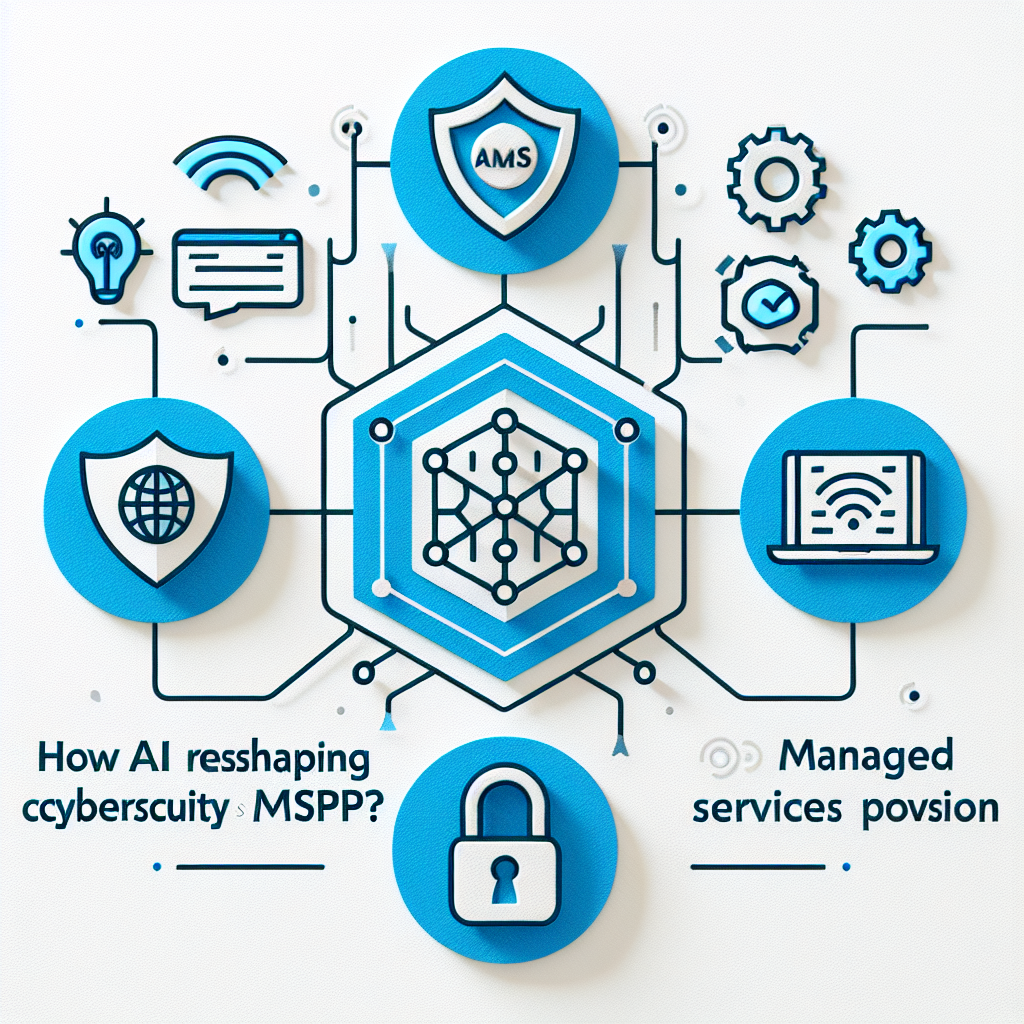
AI is changing managed security operations fast: it boosts detection and automates repetitive tasks while also enabling more convincing attacks. MSPs that understand both sides can scale services, reduce response times, and protect clients more effectively.

AI speeds up detection and automates routine work: it spots patterns across logs, surfaces likely incidents, and reduces mean time to respond. That frees engineers to handle complex investigations and client-facing strategy. AI can also improve monitoring coverage without proportional headcount increases, helping MSPs deliver more services to more clients. Expect faster alerts, better prioritization, and opportunities to offer premium detection services. Measure ROI by tracking time saved, incidents detected, and client satisfaction.
Attackers use AI to generate realistic phishing messages and to automate reconnaissance: they can mimic writing styles and craft highly targeted social engineering content. Those AI-crafted messages bypass simple filters and increase click and credential-theft rates. Malicious actors also use AI to speed up exploit discovery and to generate polymorphic malware that changes behavior. The result is more convincing lures and higher velocity attacks that require smarter defenses. MSPs must adapt detection rules and user training to this new level of sophistication.
Prioritize tools that automate high-frequency, low-complexity tasks: log aggregation, alert correlation, and routine patching are good starting points. Security orchestration, automation, and response (SOAR) platforms with AI playbooks let teams codify repeatable tasks and reduce human error. Look for integration with your RMM and ticketing systems to maintain workflow continuity. Start with vendor-neutral pilots and evaluate how much manual effort is replaced and how detection precision improves. Avoid one-off purchases; aim for solutions that fit your operational model.
The top risks are model bias, data leakage, and a skills gap: poor training data can cause false negatives or false positives and misdirect response efforts. Using cloud-based AI services may expose client metadata or sensitive telemetry if not configured correctly. Overreliance on automation without proper human review increases the chance of missed nuances in investigations. Budget and governance challenges can also slow adoption and increase exposure during transition. Mitigate risks with strict data handling policies, vendor assessments, and staged rollouts.
Good AI outcomes start with clean, labeled, and accessible telemetry: ensure logs are normalized, timestamps consistent, and sensitive fields tokenized or removed. Centralize data sources so models see a full picture rather than fragmented feeds. Maintain provenance and retention policies to support auditing and model retraining. Investing in data hygiene and observability tools usually pays off faster than buying more models. Collaborate with clients to define what data can be used and how it will be protected.
No — AI augments analysts rather than replaces them: it reduces repetitive tasks and highlights high-priority work, leaving judgment and complex investigations to experienced staff. Humans still do contextual analysis, threat hunting, and client communication. The best outcomes come from human–machine teaming where AI handles scale and humans apply nuance. MSPs that reskill their teams will see productivity gains without losing critical human expertise. Plan training programs and new SOPs so staff can evolve with the tools.
Start with clear policies on data use, model access, and change management: define who can query models, what data is allowed, and how decisions are reviewed. Build approval gates for new model deployments and keep detailed logs of model inputs and outputs for auditing. Include SLA clauses and data protection assurances in vendor contracts. Regularly test models for drift and bias and schedule routine retraining with up-to-date telemetry. Governance reduces legal and operational surprises.
AI improves and undermines phishing defenses simultaneously: defenders use it to analyze message patterns, detect anomalies, and automate takedown workflows, while attackers use it to craft believable messages. That means phishing training and technical controls must evolve: adaptive anti-phishing filters, link sandboxing, and faster DMARC/SPF/DKIM checks are essential. Combine automated detection with user awareness programs and simulated phishing exercises. Use a layered approach—policy, technology, and people—to reduce successful compromises.
Start with a three-step pilot: (1) identify one repetitive process to automate, (2) run a short pilot with clear metrics, and (3) review outcomes and expand. Examples: automate log triage to reduce false-positive workload, add AI-enhanced malware scanning in your endpoint stack, or deploy AI-assisted reporting for clients. Keep each pilot timeboxed (4–8 weeks) and measure time saved and incident detection rates. Use lessons learned to build a broader adoption roadmap.
Price based on value and outcomes rather than raw tool costs: charge for faster response SLAs, managed detection tiers, and incident remediation bundles. Quantify savings for clients (reduced downtime, fewer breaches) and present tiered packages that scale with coverage. Include implementation and ongoing data management fees where relevant. Track margin closely—AI can reduce labor, but licensing and data costs affect TCO. Pilot different pricing models and survey client willingness to pay.
Compliance requires explicit controls on client data and model outputs: ensure your AI workflows meet contractual and regulatory obligations for data residency and access. Mask or exclude regulated fields from model inputs and document processing activities for audits. Get client consent where required and include AI usage terms in your service agreements. Consider on-prem or private-cloud model hosting for sensitive clients. Maintaining compliance protects both your clients and your MSP business.
Invest in practical training: incident response with AI tools, data handling best practices, and model evaluation basics. Cross-train engineers on how AI augments triage and when to escalate to manual review. Provide tabletop exercises that include AI-driven alerts to sharpen judgment. Encourage certifications from vendors you use and run internal knowledge-sharing sessions. Training shortens the learning curve and increases tool adoption success.
Explore Palisade for security tools and assessments, and update policies with clear data handling and AI governance standards. For general guidance and tools, visit https://palisade.email/.